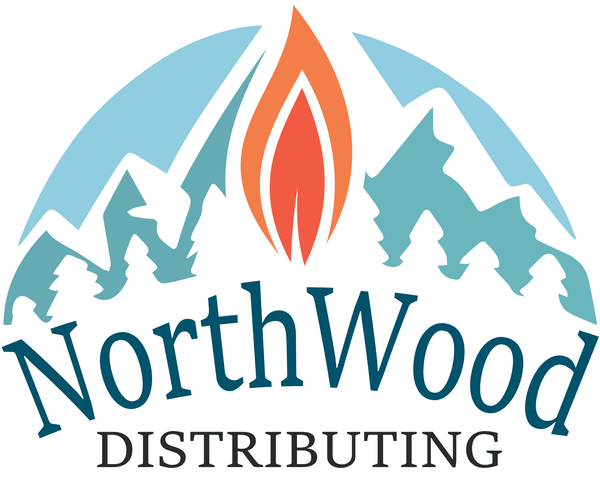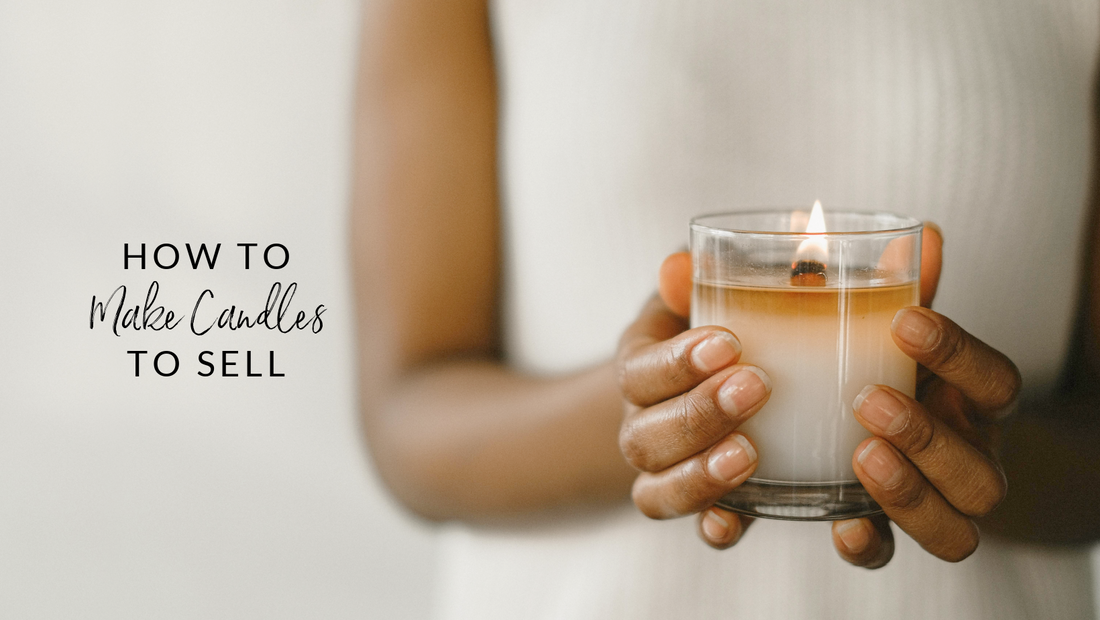If you make candles for fun, chances are your friends and family have told you "You should sell these!" Turning your candle making hobby into a business can be a great way to make some money. However, it's not as simple as just creating an Etsy shop and listing your candles for sale. Starting a successful candle business takes a lot of time and effort.
One of the most important steps is to understand the difference between making candles as a hobby and making candles at home to sell. You can sell essentially any type of candle you want, but they need to meet certain legal requirements. This post covers everything you need to know about the process.
Legal Requirements for Selling Homemade Candles
When making candles for fun, you don't need to worry about much - other than making sure they're properly wicked and burn safely. When selling your candles, you need to follow a few rules.
To comply with the regulations for running a candle business, you will need to:
- Choose a business name
- Research potential trademark and copyright issues
- Get business licenses or permits
- Review the ASTM Standards for candle making
- Label your candles properly
Reviewing the laws for selling candles will take some time, but you'll feel much better after putting in the work. Once you get familiar with the legal requirements, you can sell your candles with confidence.

Choosing a Candle Business Name
We're putting this step first because you need to have a business name before you can apply for licenses or permits. Coming up with a candle business name can be fun, but some people find it challenging. If you're struggling, consider using a business name generator to come up with ideas.
You'll also need a name before developing a business plan or starting an online store. That's why making up a name should be one of the first steps you take when starting a candle business.
Trademarks & Copyrights
Before getting too attached to your name or designing a logo, you'll want to check for potential copyright issues. Not only does this help your business stand out, it's a legal requirement for registering a business. You can't use a business name that's identical (or nearly identical) to another business that already exists.
The U.S. Patent & Trademark Office database is a great way to check for trademarked names. Another good way is to use the ICANN registration lookup tool. This will tell you if another business is already using your chosen name in its website URL.
Finally, a quick search on Google can also offer a great deal of insight. Enter your chosen business name in quotation marks to find exact matches. For example, searching for "Karen's Candles" will show you that several other businesses are already using that name.
Candle Business Licenses and Permits
To sell candles, you need to apply for a federal tax identification number, aka an employer identification number (EIN). The IRS makes it easy to apply online as a sole proprietor, an LLC, or other entity.
In addition to getting a federal tax ID, you will need to register your business at the state (and sometimes local) level. Business registration requirements can vary a lot from one state to the next. Depending on where you live, you may need state, county, and city permits to run your business. The Small Business Administration (SBA) can help, especially with its Small Business Development Centers.
As an alternative, you can track down the state office that handles general business licenses where you live. This may be any of the following:
- Secretary of State Office
- Department of Commerce
- Department of Revenue
ASTM Standards for Candle Makers
The steps covered above apply to any business, not just candle businesses. Here's where we start getting into industry specific requirements.
The candle industry is somewhat self-regulated. Many of the requirements you need to follow are actually guidelines. However, the fact that something is a guideline doesn't make it any less important. Adhering to the same standards helps candle brands make safe products and build trust with customers.
The American Society for Testing and Materials (ASTM) works with the Consumer Product Safety Commission (CPSC) to maintain a set of safety standards for candles. The ASTM standards cover regulations on fire prevention, burn testing, glass container requirements, labeling, and more.
While all the standards are important, independent candle makers need to worry most about labeling, which we’ll cover more in the next section. Many of the other rules apply more to larger brands that mass produce candles.
Getting a basic understanding of all the requirements is a good idea even as an independent candle maker. However, the ASTM standards for candles are not publicly available and you need to purchase them to read them in full. Unfortunately, small businesses may find the cost prohibitive. While you can't read them in full without buying them, you can learn more about the standards through the National Candle Association.

Candle Labeling Requirements
Labels are great for branding your candles and making them stand out from others. However, your labels also have to meet a few requirements.
Primary LabelsUnder the Fair Packaging and Labeling Act (FPLA), candle companies need to list the following on their labels:
- A statement identifying what the product is
- The name and location of your business
- The net weight of your product in ounces and grams
To identify the product, you can write something as simple as "candle" or get more specific by writing "soy wax candle." As long as it's descriptive and accurate, there is some leeway with the word(s) you use to identify what your product is.
Next, you need to list your business name somewhere on the label. Because your name is part of your brand, most people list it on the front/main label.
For your location, you can usually get away with listing just the city and state where you make your candles. You only need to list your full address if it is not accessible in a widely available public resource. For example, if you've listed your address in a printed directory or on your website, you don't need to write the full address.
Finally, you need to specify how much the product weighs in metric and imperial units. This needs to be the net weight, meaning how much the material weighs without the package or jar. The net weight would include the wax, wicks, fragrance, additives, etc. that make up the candle itself.
You probably already know how many ounces of wax and fragrance you used for your container. However, it's a good idea to actually weigh your products on a scale. To find the net weight, place an empty container on the scale and tare it to zero. Next, place your finished candle on the scale and record the weight in ounces and grams.
Below is a sample of a very basic candle label designed in Canva. It lists the company name, what the product is, the weight in grams and ounces, and the location of the business.
For more detailed information, you can read the full FPLA labeling requirements directly from the Code of Federal Regulations.
Warning LabelsThe ASTM and National Candle Association (NCA) encourage all candle manufacturers to use warning labels. While FPLA labeling rules are mandatory, candle warning labels are actually voluntary with no federal requirements. However, they're an industry standard and you definitely want to use them on your candles.
A candle warning label is a sticker on the bottom of a candle that tells you how to use it safely. At a minimum, the label should include the following words or phrases:
- A signal word such as "Warning" or "Caution"
- Burn within sight
- Keep away from combustibles
- Keep away from children and pets
If your candle has specific burning instructions or additional safety information, you can include it on the warning label. For example, it’s generally a good idea to have your label include wick trimming instructions.
Having a warning label helps keep your customers safe, but it can also help protect you from liability. If you have business insurance, your provider may require you to have warning labels.
Disclaimer: This article provides general information for educational purposes. It does not constitute legal advice. You alone are responsible for adhering to all local and federal laws when operating a candle business.

